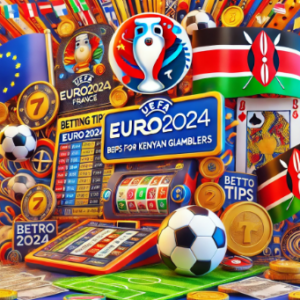Understanding the intricate relationships between currency pairs is crucial for making informed decisions and developing effective strategies when facing the fast-paced nature of the TradingView forex. One of the most important concepts in this regard is currency correlation, which refers to the way different currency pairs move in relation to each other. Identifying and interpreting these correlations can provide traders with a valuable edge in the complex world of the Forex market.
In this article, we will address currency correlations in Forex trading. We will explore the factors that influence these correlations, the impact they can have on trading decisions, and practical tips for effectively utilizing this knowledge in your trading journey. Whether you are a seasoned trader or just starting out, understanding currency correlations is a fundamental skill that can help you navigate the ever-changing aspects of the Forex market with greater confidence and success.

Understanding currency correlations
Currency correlation in Forex trading refers to the measure of how different currency pairs move in relation to each other. Correlations can be positive, meaning pairs move in the same direction, negative, meaning they move in opposite directions, or neutral, indicating no significant relationship.
These correlations are quantified through the correlation coefficient, which ranges from -1 to 1. A coefficient of 1 signifies a perfect positive correlation, meaning as one currency pair moves, the other moves in the same direction at a similar rate. Conversely, a -1 coefficient indicates a perfect negative correlation, where one currency pair moves in the opposite direction to another. A coefficient close to 0 suggests no correlation, implying that the movements of the pairs are unrelated.
Several factors influence currency correlations, each playing a significant role in how different currency pairs move in relation to one another. One of the most important factors is the economic ties between the countries whose currencies are being traded. Pairs comprising currencies from countries with significant trade or investment connections often exhibit strong correlations. For example, the Canadian Dollar (CAD) and the US Dollar (USD) frequently move in tandem due to the substantial trade relations between Canada and the United States. This is because economic events or policy changes in one country can directly impact the demand for the other country’s currency.
Another key factor affecting currency correlations is the overall risk appetite in the market. The market’s risk sentiment can also affect currency correlations. In times of uncertainty or economic turmoil, traders might flock to safe-haven currencies like the Swiss Franc (CHF), which can negatively correlate with riskier currencies or those tied to commodity prices. This is because investors tend to seek out more stable and secure investments during periods of heightened risk, leading to increased demand for safe-haven currencies.
Lastly, the carry trade strategy can also influence currency correlations. A carry trade is a strategy where traders borrow a currency with a low interest rate to fund the purchase of a currency yielding a higher interest rate. This can create correlations between high-yielding and low-yielding currencies based on the global interest rate environment. When interest rates in one country are significantly higher than in another, investors may borrow the low-yielding currency to invest in the higher-yielding one, creating demand for the higher-yielding currency and potentially leading to a correlation between the two.
Impact of currency correlations on forex trading
Recognizing positive correlations can help traders avoid opening positions in currency pairs that might expose them to amplified losses. For example, if a trader opens long positions in two strongly positively correlated currency pairs and the market moves against them, both positions will likely incur losses, potentially leading to significant drawdowns. Conversely, negative correlations can be used to hedge positions, mitigating potential losses by taking opposite positions in negatively correlated pairs. By doing so, traders can offset losses in one position with gains in the other, effectively reducing their overall risk exposure.
Hedging strategies are another crucial aspect of utilizing currency correlations in Forex trading. Traders often use negatively correlated currency pairs to hedge their positions, protecting against unexpected market movements. For instance, if a trader has a long position in EUR/USD, they might take a short position in a currency pair negatively correlated with EUR/USD to offset potential losses. This approach allows traders to maintain their primary position while mitigating the risk of adverse market movements. By carefully selecting negatively correlated pairs for hedging, traders can create a more balanced and resilient portfolio.
Positive correlations can also be used to maximize profits by entering similar positions in positively correlated pairs. If a trader identifies a strong positive correlation between two currency pairs and believes that one pair will appreciate, they might consider opening long positions in both pairs to amplify their potential gains. However, it is essential to recognize that this strategy also increases risk, as any losses incurred in one position will likely be mirrored in the other. Therefore, leveraging positive correlations for profit maximization highlights the importance of a well-thought-out risk management plan. Traders must carefully assess their risk tolerance, set appropriate stop-loss levels, and ensure that their overall exposure remains within acceptable limits when employing this strategy.
Tips for utilizing currency correlations
To effectively use currency correlations in Forex trading, consider the following tips:
Stay updated
Regularly monitor correlation coefficients, as they can change over time due to evolving economic conditions and market dynamics.
Comprehensive analysis
Combine correlation analysis with other trading strategies, such as technical and fundamental analysis, to gain a holistic view of the market.
Risk awareness
Be mindful of the inherent risks, as correlations are not absolute and can break down, especially during high-volatility events or economic shocks.
Prudent Trading
Start with smaller positions when exploring correlation-based strategies to gauge your risk tolerance and adjust your approach accordingly.
Currency correlations offer a refined lens through which Forex traders can better handle the market landscape. By understanding and strategically applying these correlations, traders can enhance their risk management practices, develop robust hedging strategies, and identify leveraging opportunities. As with all trading strategies, a cautious approach, combined with ongoing education and market analysis, is essential to truly benefit from the ever-changing Forex markets effectively.








